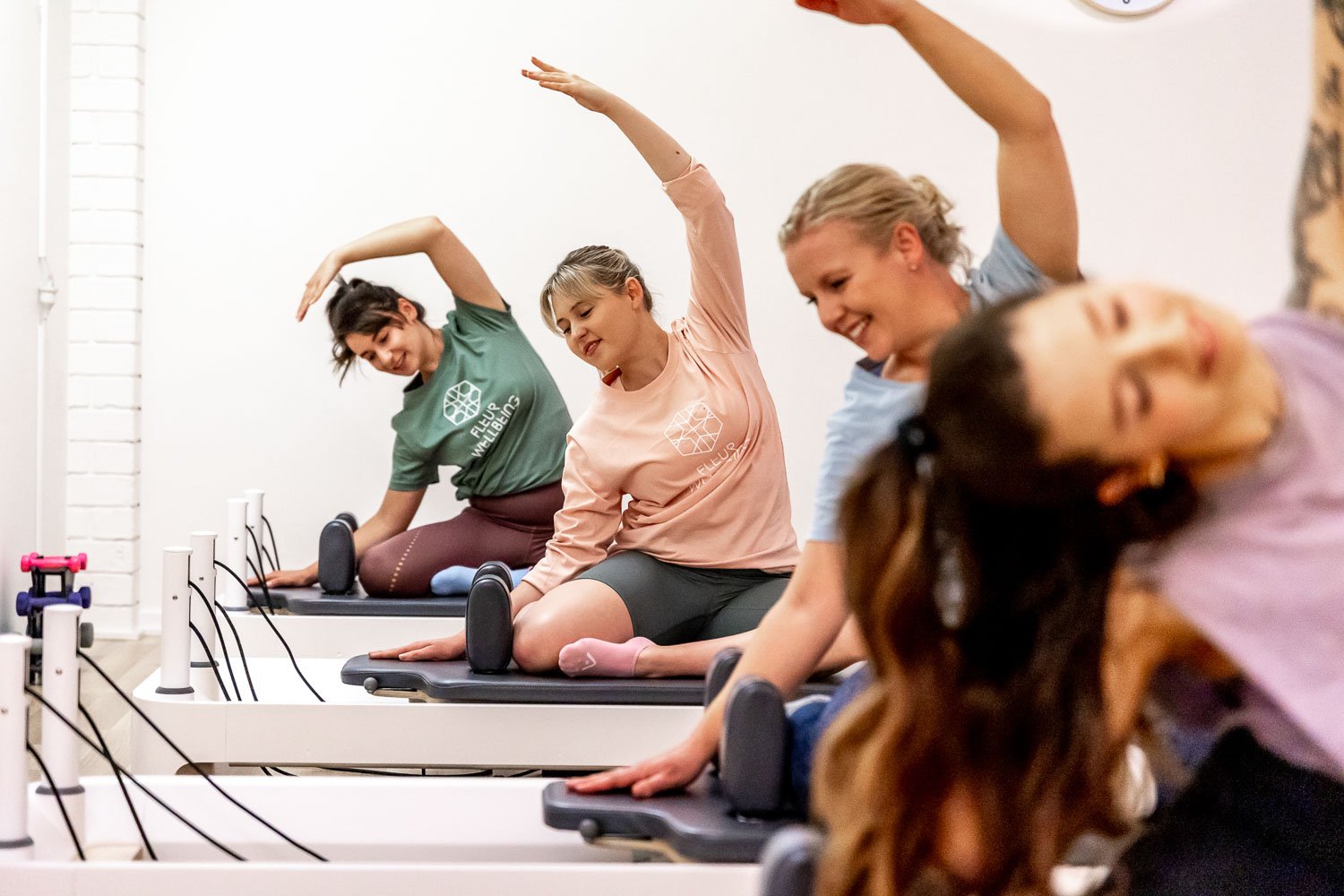How Reformer Pilates Aids in Rehabilitation
Rehabilitation can be a challenging journey, one where finding the right exercise regimen is crucial. Reformer Pilates, known for its versatility and adaptability, has emerged as a powerful tool in the realm of therapeutic exercise. In this blog, we explore how Reformer Pilates can be an effective method in aiding rehabilitation and why it's increasingly recommended by healthcare professionals.
What is Reformer Pilates?
Reformer Pilates involves a machine called a Reformer, designed to provide resistance with its springs and pulleys. This equipment allows for a wide range of exercises to be performed, targeting specific muscle groups while ensuring alignment and control. Unlike traditional Pilates, which is mat-based, the Reformer adds an element of support and resistance, making it particularly beneficial for rehabilitation purposes.
Benefits of Reformer Pilates in Rehabilitation
Enhanced Muscle Strength and Flexibility: Reformer Pilates focuses on controlled movements, which help in strengthening weakened muscles and improving flexibility. This is particularly beneficial for those recovering from muscle injuries or surgeries.
Improved Balance and Coordination: Rehabilitation often involves retraining the body to maintain balance and coordination. The Reformer's unique setup aids in this process, helping individuals regain stability.
Low Impact Nature: The Reformer provides a low-impact workout, which is essential for those in rehabilitation. It reduces the strain on joints and muscles, making it a safe option for gradual recovery.
Customisable for Individual Needs: One of the greatest advantages of Reformer Pilates in rehabilitation is its adaptability. Exercises can be modified to suit individual limitations and recovery goals.
Reformer Pilates for Specific Rehabilitation Needs
Post-Surgical Recovery: Post-operative patients often struggle with limited mobility. Reformer Pilates can be tailored to aid in regaining strength and flexibility without overstraining the body.
Injury Recovery: Whether it’s a sports injury or an accidental injury, Reformer Pilates can be instrumental in rebuilding strength and function in the affected areas.
Chronic Pain Management: For individuals dealing with chronic pain conditions like lower back pain, Reformer Pilates can help in strengthening core muscles, thereby alleviating pain.
Safety and Guidance
While Reformer Pilates offers numerous benefits for rehabilitation, it's crucial to undertake these exercises under professional guidance. Working with a qualified instructor ensures that each movement is performed correctly and safely, particularly when recovering from an injury or surgery.
Conclusion
Rehabilitation is a journey back to wellness, and Reformer Pilates can be a valuable companion on this path. Its ability to be tailored to individual needs, coupled with its low-impact and focused approach, makes it an ideal choice for those looking to recover, rebuild, and regain their strength and mobility.
FAQs About Reformer Pilates for Rehabilitation
Q: Do I need prior experience in Pilates to start Reformer Pilates for rehabilitation?
A: No, Reformer Pilates can be adapted for beginners and those new to Pilates, making it suitable for individuals at any fitness level.
Q: How soon after an injury or surgery can I start Reformer Pilates?
A: It's important to consult with your healthcare provider to determine the right time to begin. The timeline can vary depending on the nature and severity of the injury or surgery.
Q: Can Reformer Pilates be used for all types of rehabilitation?
A: While Reformer Pilates is versatile, it's not suitable for all conditions. It's essential to seek advice from medical professionals to ensure it's appropriate for your specific rehabilitation needs.

